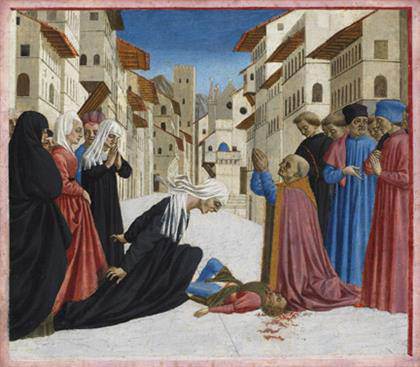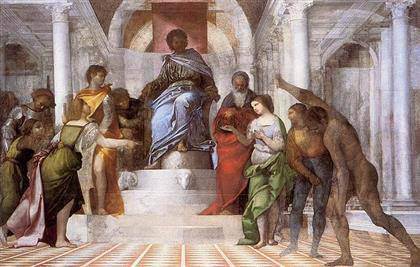
Domenico Veneziano
Saint Zenobius Bishop of Florence restores to life a widow’s son
in Borgo degli Albizzi, Florence
about 1442-1448
© The Fitzwilliam Museum, Cambridge

Sebastiano del Piombo
The Judgement of Solomon
about 1508-10
Kingston Lacy, The Bankes Collection, National Trust
National Gallery London presents ‘Building the Picture’ The National Gallery of London presents the first exhibition in Britain to explore the role of architecture in Italian Renaissance painting of the 14th, 15th and 16th centuries. 30 April – 21 September 2014.]]>
Source: The National Gallery of London
‘Building the Picture: Architecture in Italian Renaissance Painting’ aims to increase visitors’ appreciation and understanding of some of the most beautiful and architectonic paintings by Italian masters such as Duccio, Botticelli, Crivelli and their contemporaries. Visitors will be encouraged to look in new ways at buildings depicted in paintings, and to investigate how artists invented imagined spaces that transcended the reality of bricks, mortar and marble.
With a record-breaking six million visits during 2013, the National Gallery remains committed to researching and showcasing its extraordinarily rich permanent collection. As a result of the research partnership between the National Gallery and the University of York, this exhibition offers a fresh interpretation of some of the National Gallery’s own Italian Renaissance collection. In addition, ‘Building the Picture’ includes the Venetian master Sebastiano del Piombo’s ‘The Judgement of Solomon’ (Kingston Lacy, The Bankes Collection, National Trust), on display in London for the first time in 30 years, and ‘The Ruskin Madonna’ by Andrea del Verrocchio (National Gallery of Scotland).
In Renaissance Italy, art and architecture were closely interconnected and the boundaries between all the arts were fluid. An important reason for this was that there was no specific educational programme or apprenticeship for architects. The Florentine architect Brunelleschi, for example, trained as a goldsmith, while Michelangelo was a painter and sculptor before he designed buildings.
“This exhibition provides a wonderful opportunity to think about how pictures can achieve an architectural sort of beauty. We can look beyond perspective to appreciate the imagined and fantastical spaces created by architecture“, explained Caroline Campbell, Curator of Italian Paintings Before 1500 at the National Gallery “And how the sense of mass, scale and three-dimensionality introduced by buildings changes the balance and feel of a painting.”
Related content
Two versions of Van Gogh’s ‘Sunflowers’ at the National Gallery of London (news, 2014)
Follow us on:


